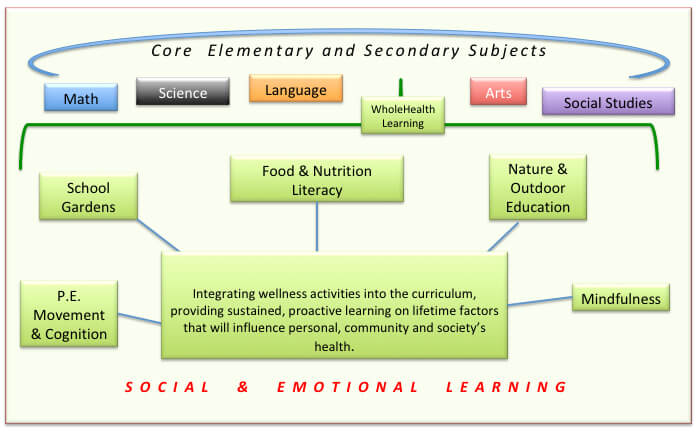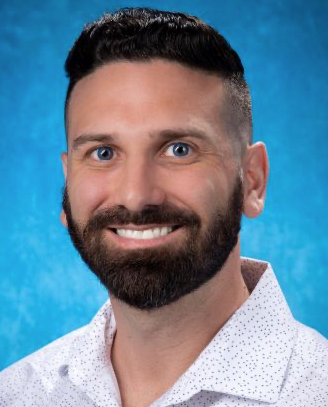The Center for Whole Health Learning in K-12, Inc.
WholeHealthED is an independent, non-profit organization advocating for infusing a comprehensive whole health learning experience into American elementary and secondary education. We advocate for an urgently needed remaking of health education that responds to the challenges faced by the Nation and its youngest generation, and that specifically prepares children and adolescents with the skills, knowledge and awareness they will need to overcome the impact of COVID, and thus to:
- Manage the many aspects of life that influence health and well-being, for them, their families, their communities, and the Nation, and to
- Prepare for careers, professions and public issues now emerging in sustainability, natural systems and the emerging wellness-sector of the economy that encompass technology, healthcare, law, land and water management, academic research and specific skills and talent development
The Vision
Students develop during their K-12 years a competency in the factors that strengthen their own wellbeing and that of their families, communities and the planet, and a mindset that will inform their lifestyle choices as they grow and mature and bypass the chronic illnesses that are now projected for most of them.
The Mission
Our mission is to advance partnerships, models and collaborations among educators, practitioners, public and private agencies and organizations who are in position to support much greater investment in and commitment to this vision. And to connect them with the advocates and supporters who have been deeply involved for many years in the domains that characterize whole health learning: In garden, nature, nutrition, cognition-based fitness and mindfulness, in concert with Social and Emotional Learning (SEL) and Whole School, Whole Community, Whole Child (WSCC) communities of practice.
The outcomes each has achieved independently have effectively established the foundations for what we see as a national movement in school-centered strengthening of children’s well-being and resilience. Which is providing children and schools the means to achieve it.
How Whole Health Learning Fits in K-12 Education

See more on the foundations of Whole Health Learning here.
The Urgency
The necessity of a changing the way children learn about health and wellbeing and the role of formal education in that process was plain well before the COVID-19 pandemic emerged in the spring of 2020. In 1997, the Institute of Medicine issued a report entitled: “Schools & Health: Our Nation’s Investment.” It noted:
“The schools of yesteryear were not expected to solve the health and social problems of the day by themselves; the medical, public health, social work, legislative, and philanthropic sectors all pitched in. Given the scope and complexity of the health problems of today’s (1997) children and young people, it is again likely that schools will not be able to provide solutions without the cooperation and support of families, community institutions, the healthcare enterprise, and the political system.”
Nearly a quarter of a century later, a period during which the nation has experienced a nearly unchecked rise in childhood obesity, substance abuse, and concurrent declines in mental, emotional and behavioral health and academic performance what was needed then is plainly more urgently needed now.
The uplifting experiences in the school garden and other whole health learning activities offer a new way to engage students in ways that call on their diverse learning capacities, which strengthen the traditional academic and social outcomes all school leaders and parents want.
Our Sponsors and Supporters



